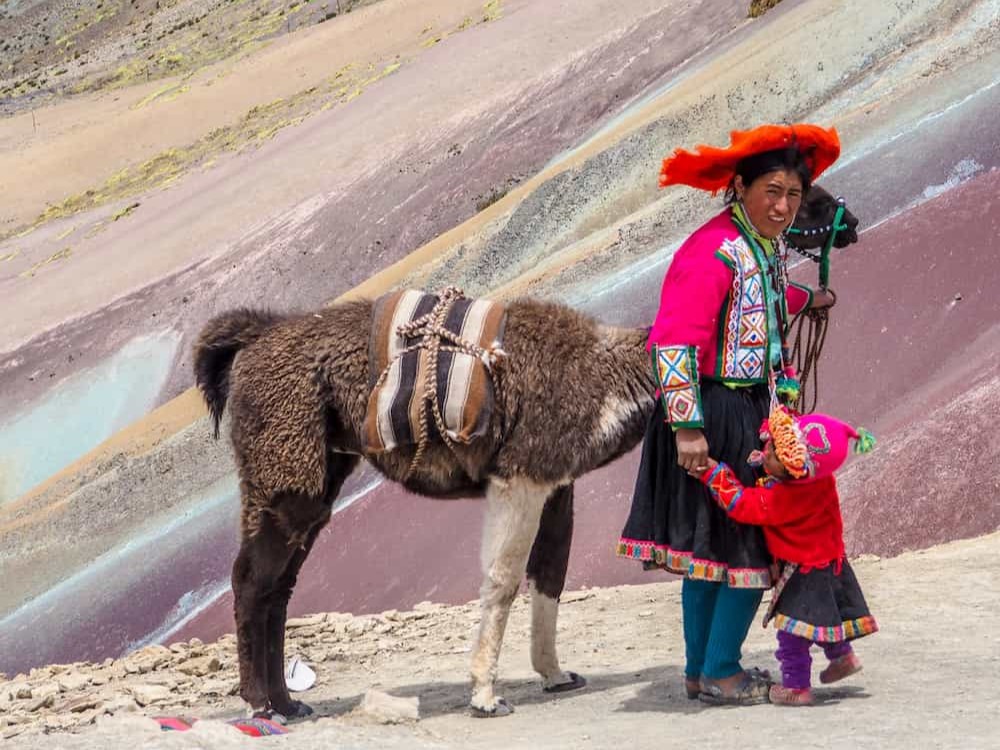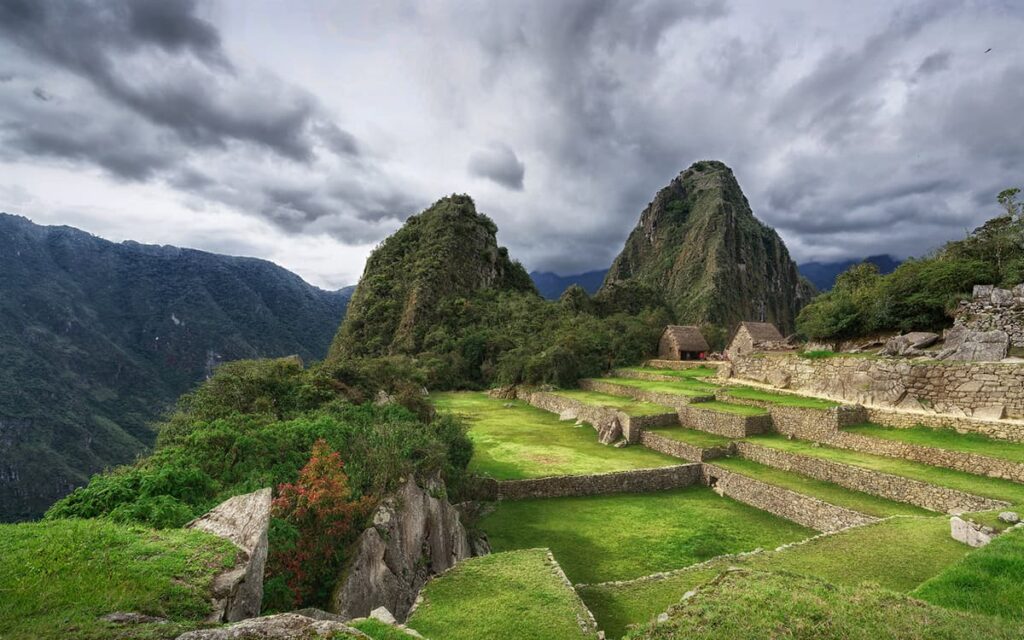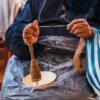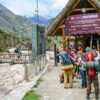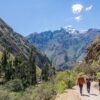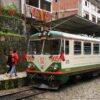The Santa Catalina Monastery is considered one of the most beautiful temples in America, which keeps the most harmonious architectural expressions typical of the colonial era.
Located in the department of Arequipa, this monastery was founded for a group of nuns on September 10, 1579 in honor of Santa Catalina de Siena. However, it was in 1559 that the efforts to build this convent began. The project was approved by Viceroy Fracisco Toledo and worked under the supervision of Don Juan de la Torre, a knight with the golden spur.
The Spanish Doña María de Guzmán, widow of Diego Hernández de Mendoza, was the main contributor and also the first inhabitant of this temple. His daughter Ana Jesús and her dear friend Quiteria del Berrido, followed in his footsteps and also dressed in their habits.
The outer part of the Monastery is protected by a thick high wall. Its interior is like a labyrinth, made up of narrow streets and passages with Spanish names such as Seville, Granada, Malaga, Toledo, among others, which converge in a small square in the center of the temple.
Santa Catalina in Perú has rooms that were designed with different dimensions and comforts according to the social origin of the nuns. In the place, you can also find small rooms for various types of workshops such as crafts or cooking. Currently, the Santa Catalina Convent is a tourist center to which Peruvian and foreign visitors come eager to visit it and learn more about its history.
Location
The Santa Catalina Monastery is located on Calle Santa Catalina 301, three blocks from the Plaza de Armas in the city of Arequipa.
History
Viceroy Francisco Toledo, during his visit to Arequipa, was informed by the council about his desire to found a monastery for nuns. This motivated him to grant the necessary licenses for the foundation of the «Private Monastery of Nuns of the Order of Santa Catalina de Siena». Years later, Doña María de Guzmán, widow of Diego Hernández de Mendoza, a beautiful, rich and young woman who had no children, decides to seclude herself in the monastery under construction, giving up all her assets for this.
On Sunday, October 2, 1580, a high mass is celebrated in the city and Doña María, recognized as the founder, formally takes the habit. The women who entered the monastery as nuns were Creoles, mestizos and even daughters of curacas. It was only in 1964 that the first Spanish nuns entered. The story also tells of the entry of «poor nuns» and ladies of the city, who without embracing religious life, entered the monastery to exercise their virtues. In 1582, Arequipa endured a strong earthquake, with the construction of the monastery seriously damaged. Despite this, the closure was preserved. From then on, a period of suffering began, in which the nuns themselves repaired their rooms. The chapel, due to lack of money, could not be renovated «for which the Blessed Sacrament was exhibited in a straw hut.»Description
This religious tourist complex of Santa Catalina in Perú was founded in 1579, it was built as a small town, it was expanded in the 17th century. The convent occupies an area of ??approximately twenty thousand square meters and its distribution is similar to that of the first neighborhoods of the city of Arequipa. The Santa Catalina Monastery is probably one of the largest convents in the world. 450 nuns have lived here for over 400 years, completely cut off from the world. The inhabitants of Arequipa had no notion of what was happening inside the complex, many fantastic stories circulate about this convent. Santa Catalina was enveloped in an aura of mystery until 1970, when a large part of the convent opened its doors to the public.
The continuous earthquakes that affected Arequipa since 1582, destroyed the primitive constructions and also the properties of the relatives of the Catalina nuns, on which the censuses had been imposed that guaranteed the future economy of the monastery and its survival. This was the cause and origin of the existing citadel in the Monastery of Santa Catalina de Siena in Arequipa. The relatives of the nuns chose to have private cells built for them, since the common bedroom was damaged or was too small for the increasing number of nuns every day. For almost two centuries, in the viceregal era, the cloisters and cells of the Santa Catalina monastery have undergone modifications, additions and new constructions, which have made it a true sample of Arequipa’s colonial architecture.
Attractions
The northern area of ??the Santa Catalina complex in Perú is still inhabited by nuns. When visiting the site, you can freely see the rest of the convent. You can still breathe the atmosphere of the dark Middle Ages when visiting the dining room, the room where the nuns do the washing and a complete library with incredible collections of books, unfortunately this library is not always open to the public.
Visitors can stay all day and can enter the inhabited sector of the convent, which gives a lot of inspiration.
One of the cloisters belonged to Blessed Sor de los Ángeles Monteagudo, who was beatified during the visit to Peru by Pope John Paul II in 1985, likewise in the art gallery you can find works from the Cuzco school.
Gallery
At the beginning of the restoration work of the Monastery before its opening, a large collection of paintings of predominantly religious motifs, exponents of viceregal painting of Peru, was found scattered throughout its entire extension. Approximately 400 pieces were restored or «refreshed» to restore their original appearance. The work of expert hands has returned to today’s observer, a collection of extraordinary artistic and historical value. The main works are exhibited in a majestic setting: two immense rooms with a high vault, arranged in a cross, in which the stucco has been removed, leaving the walls in ashlar. To the side, another smaller vault completes the architectural unit dedicated to the museum.
In the Pinacoteca we can see one of the most important samples of religious art on the continent. In addition to a large collection of works from the so-called Cusco School of painting, the highest expression of the fusion of the feelings and values ??of two cultures: the Inca and the Spanish. Indian artists of the 16th – 18th centuries achieved extraordinary artistic and craftsmanship in outstanding works of religious inspiration, famous for originality of style, depth of expression, and the use of gold in their finish.
Paint styles
The Santa Catalina Monastery keeps pictorial works of the various artistic styles that developed during the viceroyalty and the early days of the republic. There are paintings of the Mannerist style arrived from Italy in the early days: canvases with a clear influence from the Spanish school, highlighting a clearly Zurbaranezco Saint Michael the Archangel, and naturally works from the so-called Cusco school of painting, which developed in Peru over the centuries. XVII and XVIII.
How to get to Santa Catalina in Perú?
The Santa Catalina Monastery is located near the Plaza de Armas, on the left branch of the avenue that goes next to the Cathedral of Arequipa. The price of admission is 30 soles, with the company of a guide or, if you like, you can choose to do it on your own, although in this case you would miss all the explanation and the curious details that are locked behind these immense walls of ashlar.
They are open every day of the year except for Christmas, New Years and Good Friday Regular hours: from 9:00 a.m. at 5:00 p.m.
High season: Monday, Wednesday, Friday, Saturday and Sunday from 8:00 a.m. at 5:00 p.m. and, Tuesday and Thursday: from 8:00 a.m. at 8:00 p.m. Special prices for children and retirees.
Visit to the Santa Catalina Monastery
After paying the 40 soles entrance fee, walk to the Patio del Silencio, right where one of the two toilets in the entire complex is located.
At the end, and without the possibility of leaving there is the Cloister of the Novices. Continuing, you will arrive at the Patio del Silencio. At this point one begins to imagine how big the Santa Catalina monastery is, which in my view, more than a monastery is a small fortified city.
Then, you will find one of the most interesting places in the monastery, the cloister of the Naranjos.
This gives access to several cells, the Profundis room, the Pinacoteca and one of the main streets, Córdova street. Although the truth is that the buildings on this street, with the ones on Toledo, Seville and Granada streets are really similar.
The streets previously mentioned are usually painted a copper red hue, although depending on the time of day, the color may vary a bit.
Most of the houses are actually cells where the resident nuns of the Santa Catalina monastery were housed. That is why in many of them we can find small fireplaces to heat the home on the coldest days.
Keep walking until Toledo street. From there you will reach Calle Sevilla, where there is a small bar where you can enjoy a tasty coffee, although knowing that there is a cemetery on the other side of the wall, surely more than a superstitious person would think twice.
If you travel to Perú, we also recommend you to visit another impressive destinations in the city of Cusco like the tour to rainbow mountain peru or the humantay lake tour from cusco, which only takes one day. But if you are gonna to stay more days in Cusco, other archaeological places you can know will be the choquequirao trek peru, the salkantay trek to machu picchu, and the classic inca trail 4 days 3 nights.

